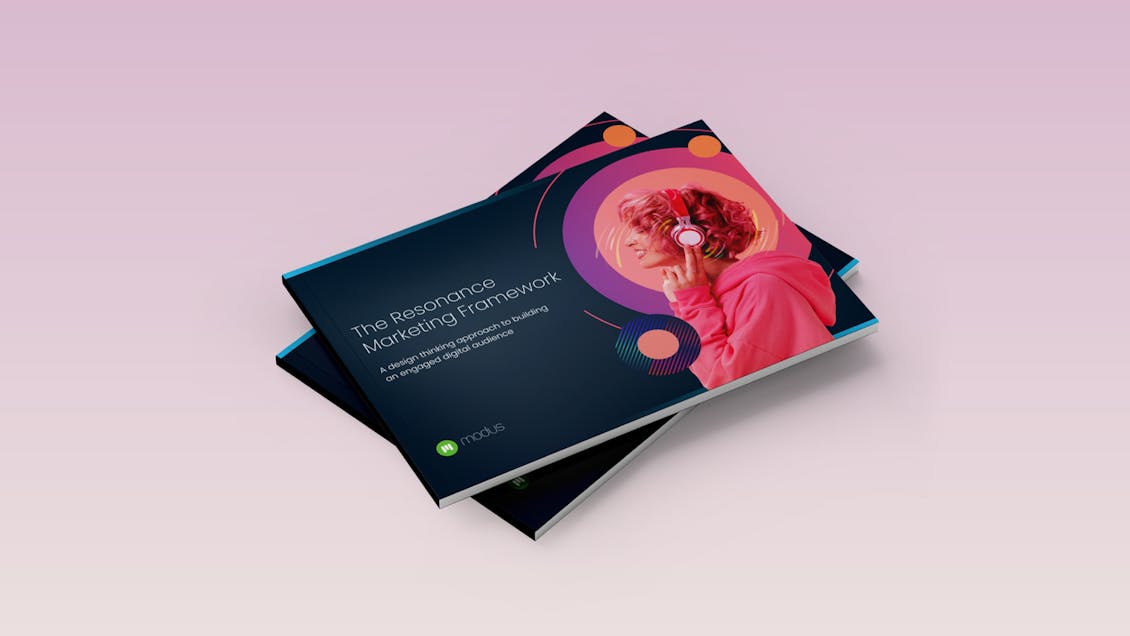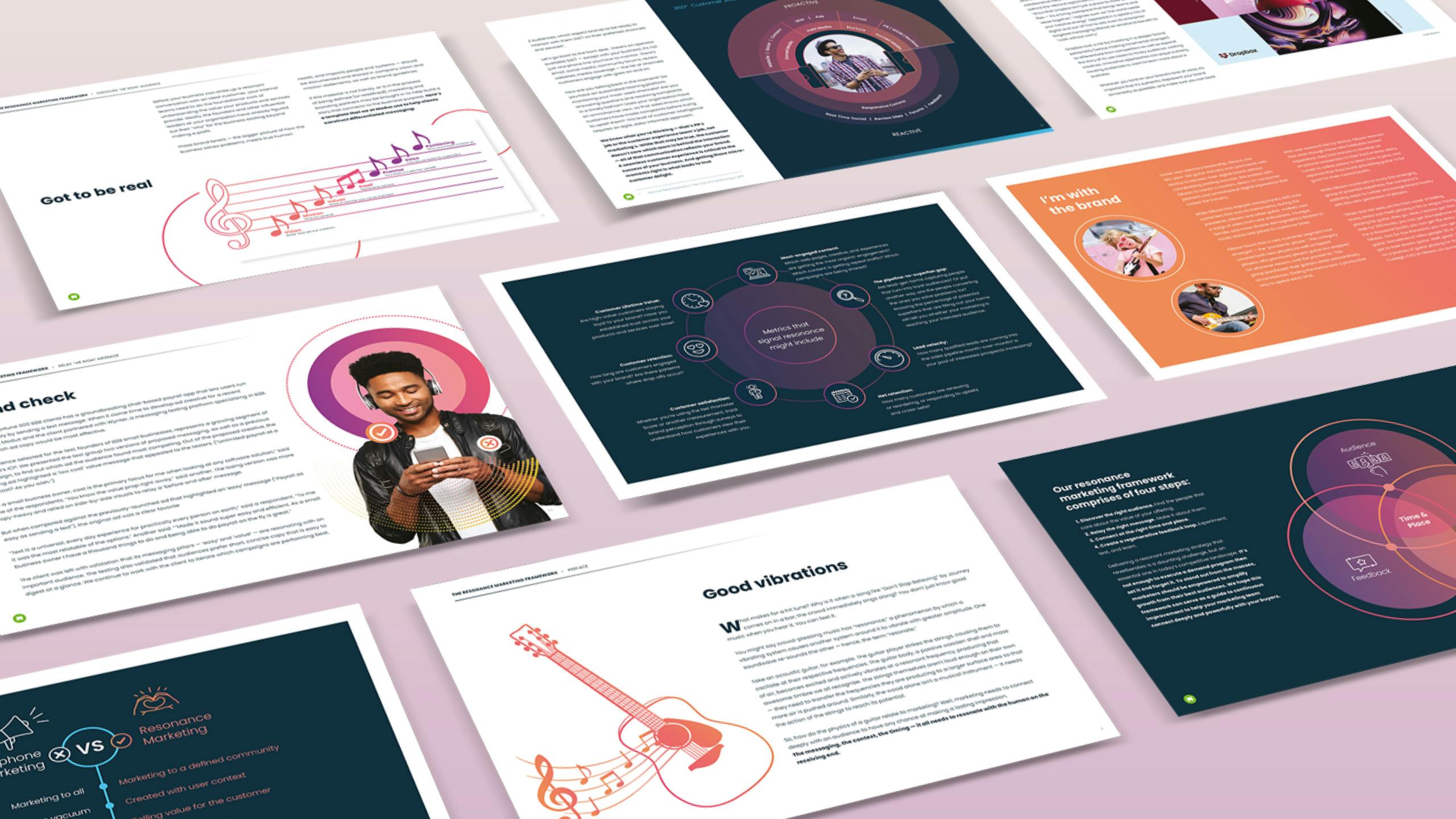eBook Preview: The Resonance Marketing Framework

A design thinking approach to building an engaged digital audience
The following is the preface to our latest eBook. Download the full version here.
What makes for a hit tune? Why is it when a song like “Don’t Stop Believing” by Journey comes on in a bar, the crowd immediately sings along? You don’t just know good music when you hear it. You can feel it.
You might say crowd-pleasing music has “resonance,” a phenomenon by which a vibrating system causes another system around it to vibrate with greater amplitude. One soundwave re-sounds the other — hence, the term “resonate.”
Take an acoustic guitar, for example. The guitar player strikes the strings, causing them to oscillate at their respective frequencies. The guitar body, a passive wooden shell and mass of air, becomes excited and actively vibrates at a resonant frequency, producing that awesome timbre we all recognize. The strings themselves aren’t loud enough on their own — they need to transfer the frequencies they are producing to a larger surface area so that more air is pushed around. Similarly, the wood alone isn’t a musical instrument — it needs the action of the strings to reach its potential.
So, how do the physics of a guitar relate to marketing? Well, marketing needs to connect deeply with an audience to have any chance at making a lasting impression. The messaging, the context, the timing — it all needs to resonate with the human on the receiving end.

But it’s not enough to give away free samples or put out a sappy ad campaign with kittens. Authenticity is particularly crucial as the Gen Z audience matures into the next cohort of buyers. Their ability to detect gimmicks and hollow messaging is spot-on. They’ve grown up in the era of “fake news” and will quickly call out any false claims. Forty-five percent of Gen Z-ers say they are motivated to engage with brands that appear “trustworthy and transparent” in their social media.
To ensure marketing experiences are ones that your audience will actually want to participate with, you must do the hard work of customer research, user testing, and establishing a continuous feedback loop. Not doing so could mean missed opportunities to organically increase reach, audience loyalty, and revenue.
Along the way, you’ll need to define your organization’s North Star, keep the customer at the center, and adopt agile methods to move nimbly. When you hit those strategies just right, your marketing will be a hit with the audience.
At Modus, we’re passionate about designing, building, and marketing better experiences for people. I hope you find this framework an enriching resource as you evolve your marketing program. We invite you to share your feedback.
Partner, Chief Strategy Officer



